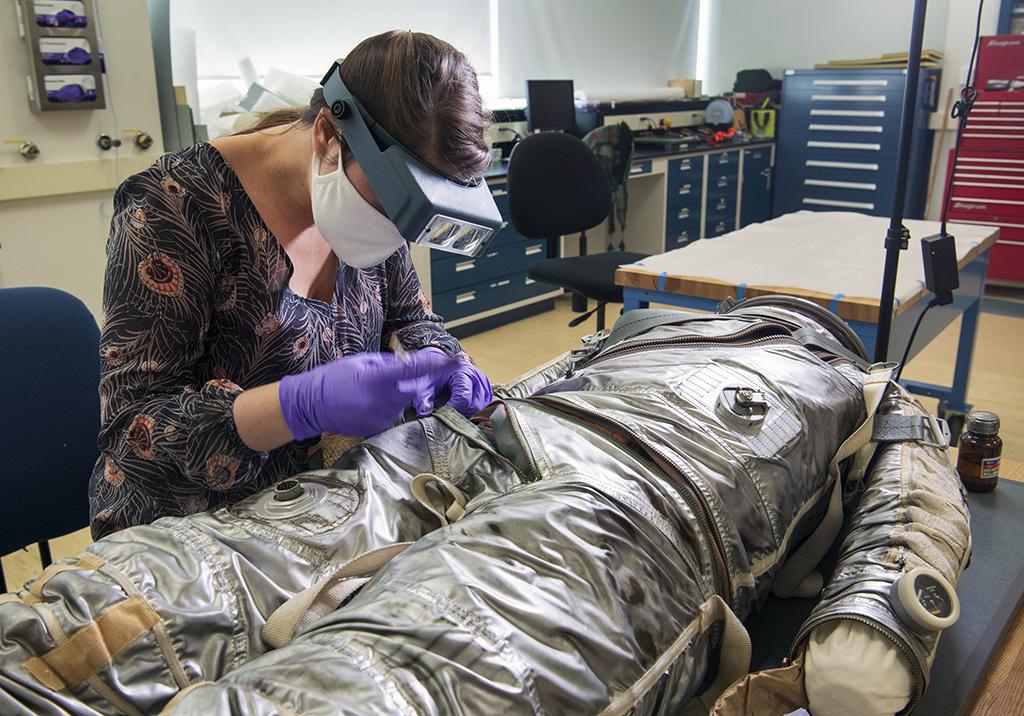
Shepard’s Mercury 7 flight suit has also been preserved for public viewing. At 2:45 a.m. EDT on the day of his flight, NASA officials helped get him into the full-pressure spacesuit.
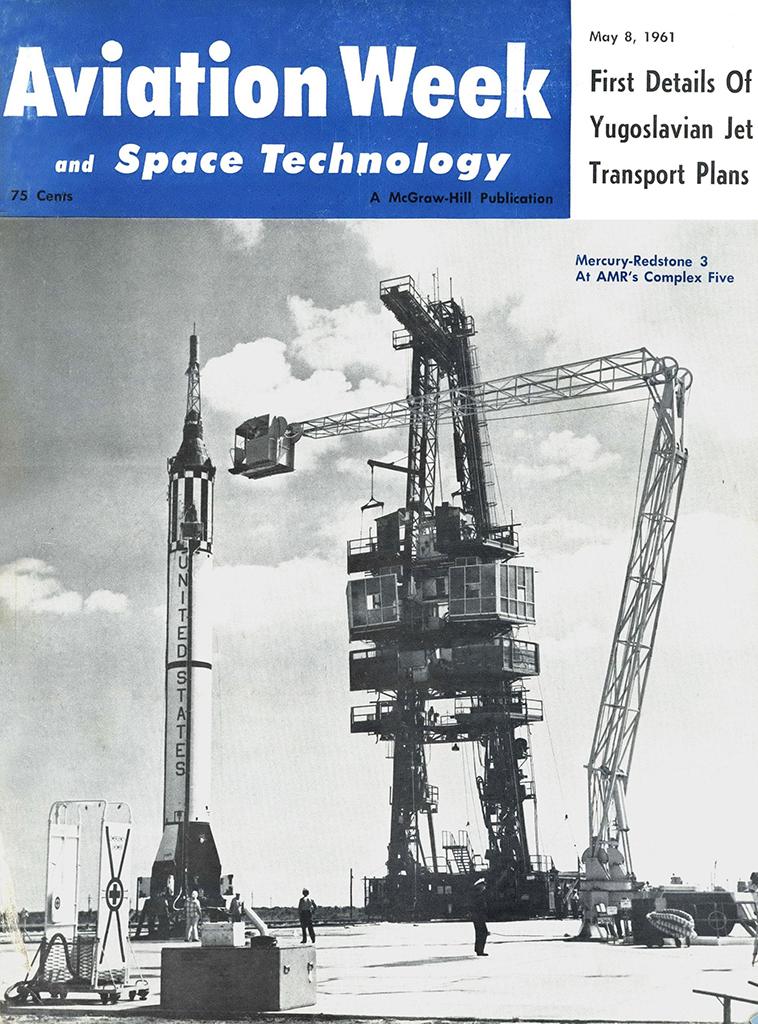
In preparation for the historic flight, NASA conducted an egress test of the Mercury-Redstone booster featured on the cover of the May 8, 1961, edition of Aviation Week. The astronaut would enter the capsule by riding an elevator to the third level of the Redstone gantry (background) and climbing through the trapezoidal hatch.
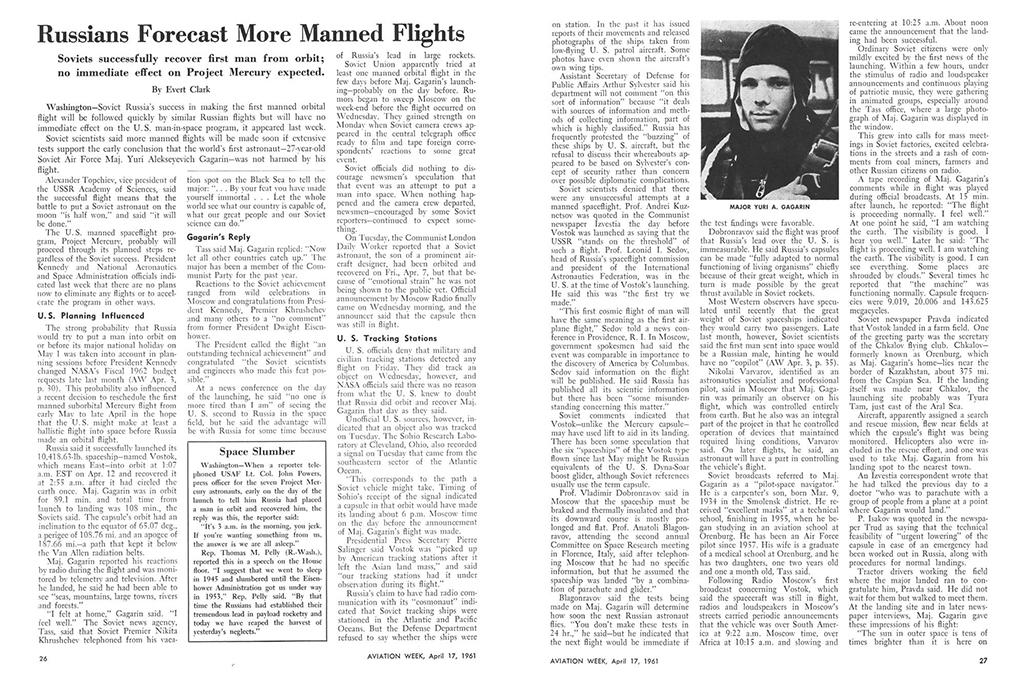
One month earlier, Russian cosmonaut Yuri Gagarin became the first human to orbit the planet. The Soviet Air Force major was quoted in Aviation Week as saying, “Now let all other countries catch up.” Gagarin’s challenge struck a chord with U.S. President John F. Kennedy, who was also smarting from the Bay of Pigs diplomatic blunder. Kennedy began asking what the U.S. could do to leapfrog the Soviets, according to Mike Neufeld, curator in the Space History Department at the Smithsonian National Air and Space Museum.
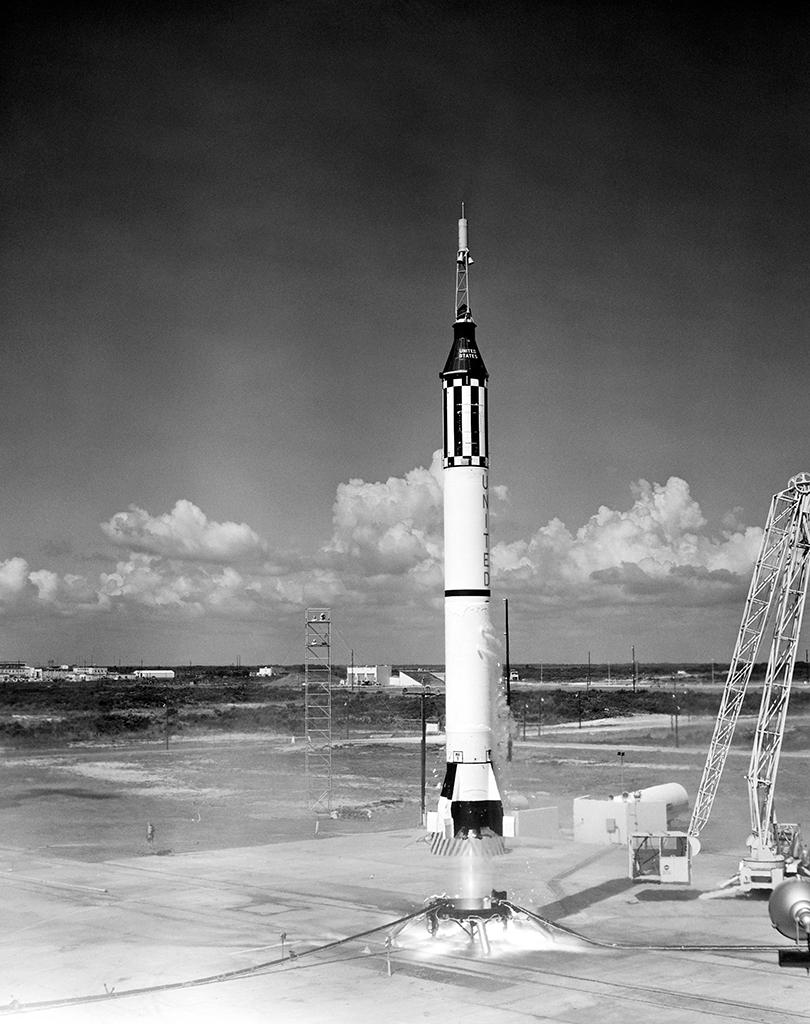
NASA was already getting ready to launch Shepard on a 15-min. suborbital flight, which made him the first U.S. astronaut in space. The rocket was based on the Redstone ballistic missile technology developed by the team led by Wernher von Braun before it was transferred from the Army to NASA in 1960.
etting ready to launch Shepard on a 15-min. suborbital flight, which made him the first U.S. astronaut in space. The rocket was based on the Redstone ballistic missile technology developed by the team led by Wernher von Braun before it was transferred from the Army to NASA in 1960.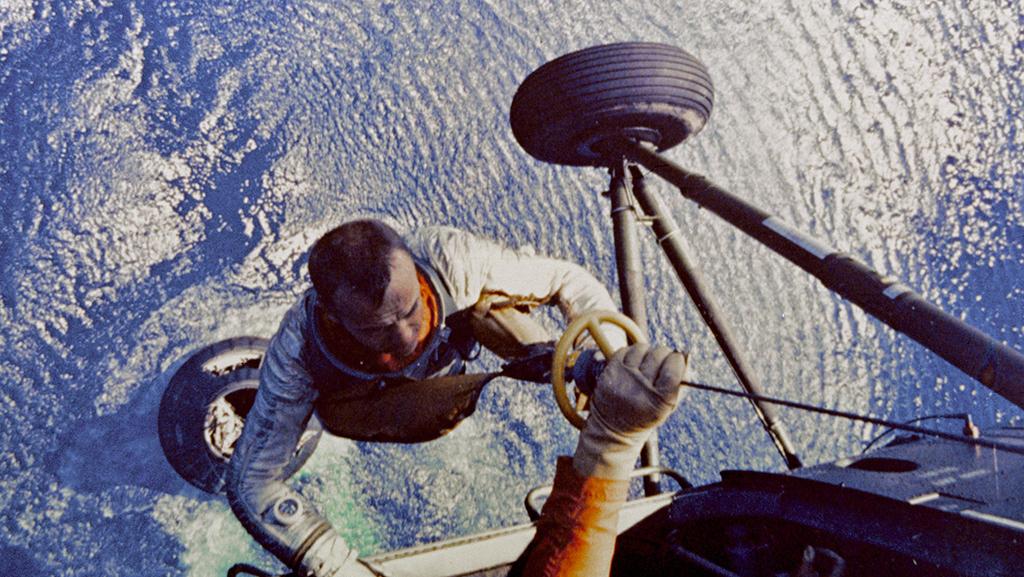
The flight carried Shepard 116 mi. above the Earth and ended with him being hoisted onto a U.S. Marine helicopter after splashdown. Though Shepard did not beat the Soviets into orbital flight, the mission was a success.
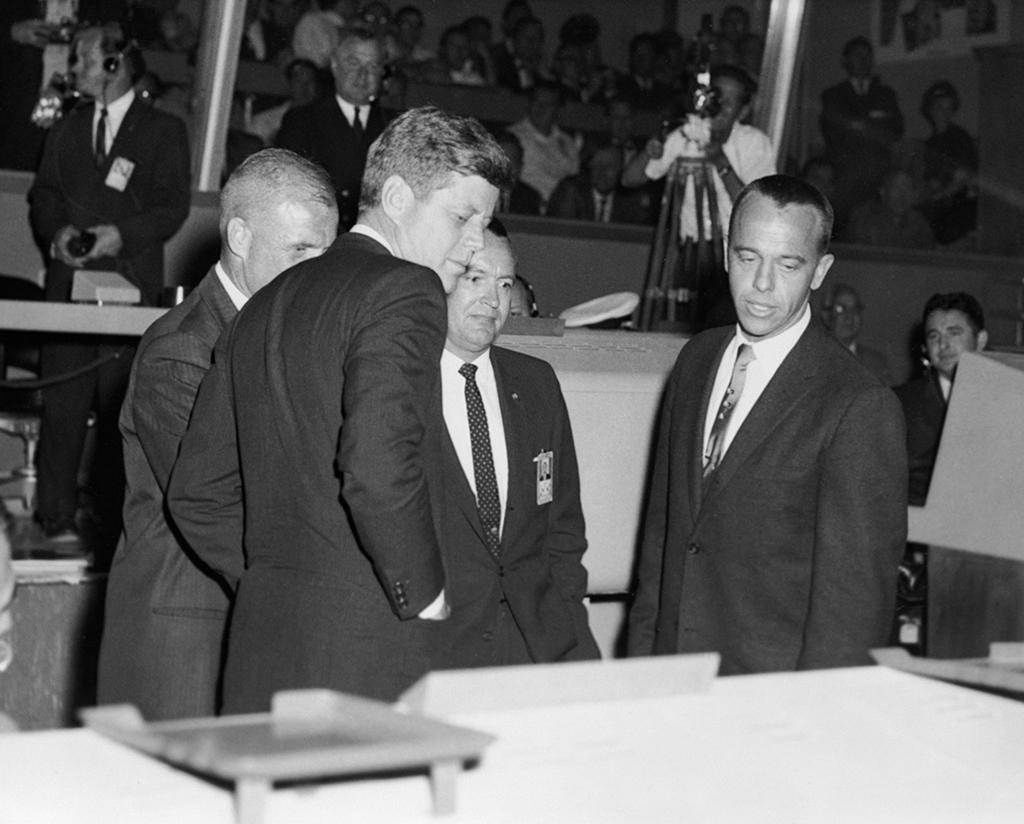
NASA’s success helped with Kennedy’s major speech to Congress on May 25, remembered most for its vow to land a man on the Moon within the decade.
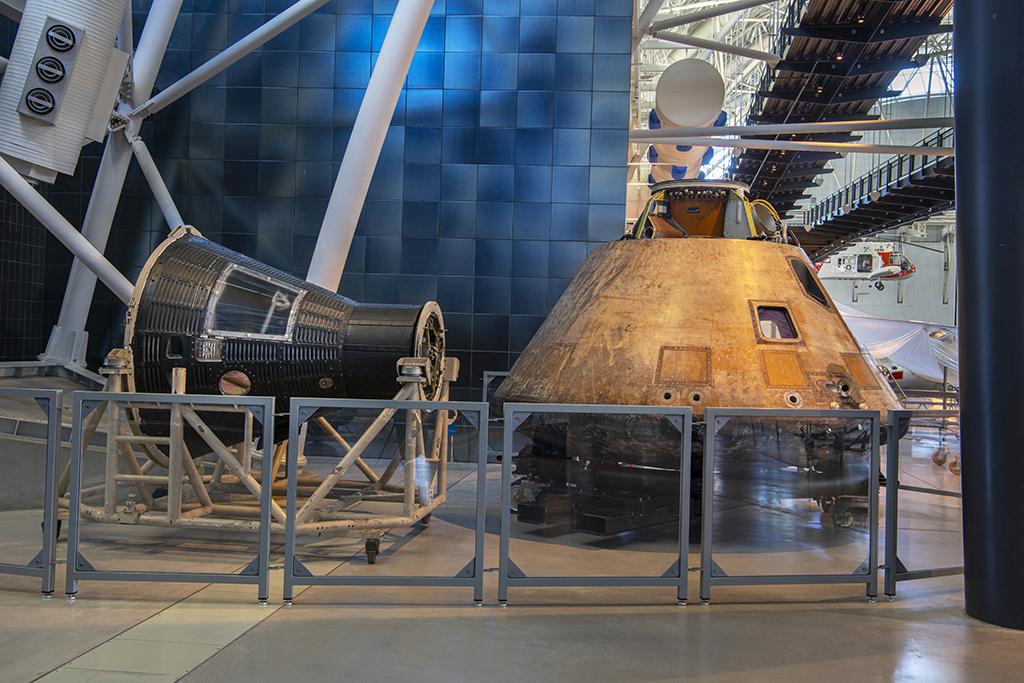
The Freedom 7 capsule that carried Shepard to space is on display next to the Apollo 11 command module. It is a well-traveled spacecraft, having been featured at the U.S. Naval Academy for many years, before it was requested by the John F. Kennedy Presidential Library and Museum in Boston until 2020. Before coming to the Udvar-Hazy Center, it was sent to a conservation lab for cleaning.

Shepard’s Mercury 7 flight suit has also been preserved for public viewing. At 2:45 a.m. EDT on the day of his flight, NASA officials helped get him into the full-pressure spacesuit.

In preparation for the historic flight, NASA conducted an egress test of the Mercury-Redstone booster featured on the cover of the May 8, 1961, edition of Aviation Week. The astronaut would enter the capsule by riding an elevator to the third level of the Redstone gantry (background) and climbing through the trapezoidal hatch.

One month earlier, Russian cosmonaut Yuri Gagarin became the first human to orbit the planet. The Soviet Air Force major was quoted in Aviation Week as saying, “Now let all other countries catch up.” Gagarin’s challenge struck a chord with U.S. President John F. Kennedy, who was also smarting from the Bay of Pigs diplomatic blunder. Kennedy began asking what the U.S. could do to leapfrog the Soviets, according to Mike Neufeld, curator in the Space History Department at the Smithsonian National Air and Space Museum.

NASA was already getting ready to launch Shepard on a 15-min. suborbital flight, which made him the first U.S. astronaut in space. The rocket was based on the Redstone ballistic missile technology developed by the team led by Wernher von Braun before it was transferred from the Army to NASA in 1960.
etting ready to launch Shepard on a 15-min. suborbital flight, which made him the first U.S. astronaut in space. The rocket was based on the Redstone ballistic missile technology developed by the team led by Wernher von Braun before it was transferred from the Army to NASA in 1960.
The flight carried Shepard 116 mi. above the Earth and ended with him being hoisted onto a U.S. Marine helicopter after splashdown. Though Shepard did not beat the Soviets into orbital flight, the mission was a success.

NASA’s success helped with Kennedy’s major speech to Congress on May 25, remembered most for its vow to land a man on the Moon within the decade.

The Freedom 7 capsule that carried Shepard to space is on display next to the Apollo 11 command module. It is a well-traveled spacecraft, having been featured at the U.S. Naval Academy for many years, before it was requested by the John F. Kennedy Presidential Library and Museum in Boston until 2020. Before coming to the Udvar-Hazy Center, it was sent to a conservation lab for cleaning.

Shepard’s Mercury 7 flight suit has also been preserved for public viewing. At 2:45 a.m. EDT on the day of his flight, NASA officials helped get him into the full-pressure spacesuit.
Six decades ago, Alan Shepard became the first U.S. astronaut to reach suborbital space. To commemorate the Cold-War-era milestone, the National Air and Space Museum’s Steven F. Udvar-Hazy Center is reopening its doors to visitors on May 5, and has the Freedom 7 capsule on display next to the Apollo 11 command module. This is a look back at our digital archive of the event, along with images of the display and more.








Comments